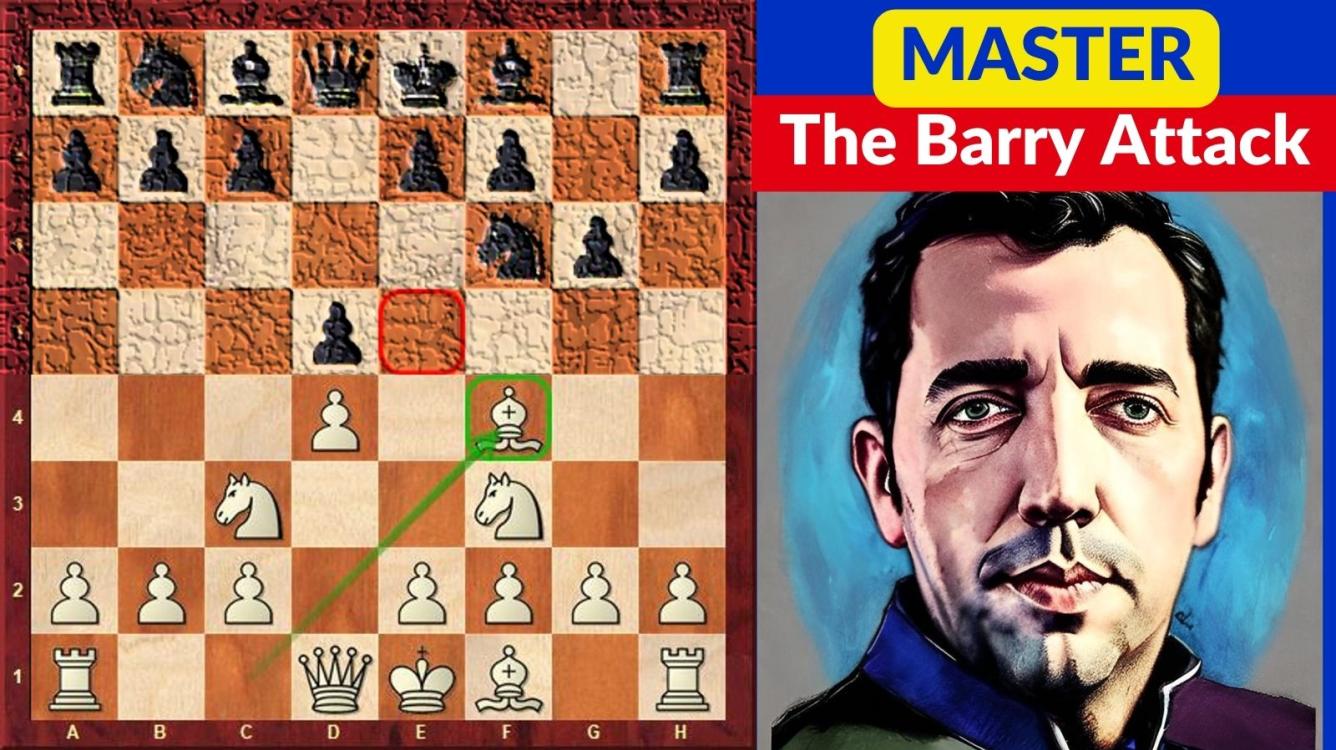
Play the Barry Attack - One in a Million Chess
Crafting an effective opening repertoire can be a daunting endeavor, as the multitude of choices can leave you feeling overwhelmed. Striking a delicate balance between selecting solid lines and avoiding predictability is key. While opting for mainstream lines ensures familiarity, it also exposes you to opponents who are well-prepared against common repertoire choices.
But what if there was a way to gain a competitive advantage by choosing sound lines that aren't excessively popular among top players? Look no further than One in a Million Chess, where I explore such unorthodox yet successful openings. Check out my playlist on the Barry Attack:
https://www.youtube.com/playlist?list=PLAssW4po3rKqeD_otDUFsXh4Ywp98vP-x
Join me at One in a Million Chess on YouTube https://youtube.com/@oneinamillionchess as I uncover the hidden ideas of this extraordinary repertoire.
Step outside the realm of conventional openings and embark on a journey toward a distinct and advantageous repertoire. Get ready to outmaneuver your opponents with style, as we delve into the realm of unconventional chess strategies.
What are the advantages of playing a 1.d4 repertoire without 2.c4?
- Taking the game into a less-studied territory. The thing is not that these lines aren't well-known but are less studied.
- Playing 2.Nf3 doesn't spoil White's chances to get an opening advantage.
- The change of the usual character of the typical 1.d4 positions carries a good amount of poison. Lines without 2.c4 are fresher and might come as a surprise to your opponents.
In my recently created YouTube channel, I've been explaining some basic ideas to building a 1.d4 repertoire of this kind. I started with the idea of playing the Barry Attack as a way to avoid the Kings Indian defense and the Grunfeld.
The Barry is a perfect way to sidestep the Kings Indian defense, the surprise factor can be turned into various kinds of advantages.
After 3.Nc3 the best move is 3…d5 but this move feels completely unnatural, hence is not uncommon to meet 3…Bg7 and after 4.e4 d6 the game reached the Pirc defense which on its own would be nothing special but if we take into account that your opponent’s repertoire might not include the Pirc then tricking them into the Pirc is a complete success for our cause.
Imagine that you found out that your opponent plays the KID and against 1.e4 he plays the Sicilian, a typical repertoire for an aggressive player. If you manage to trick him into the Pirc it would mean a lot and if you are well prepared to attack this defense it would be felt right away in the game dynamic.
Sometimes, as I’ve explained in my first video on the Barry, things can get even better…
Imagine you play 3.Nc3 Bg7 4.e4 and your opponent plays 4…0-0 now believe it or not Black is on the verge of defeat. Look at the following idea to understand what I'm talking about.
Once you get in the Barry White has several promising lines. The most commonly played is 5.e3 it seems unpretentious but hides some extremely aggressive ideas as can be witnessed in the following game from my friend Arthur Kogan:
This primitive-looking attack is very effective and later helped baptize the Tarzan variation.
Understanding the Barry Attack without studying Mark Hebden's games doesn't seem possible. In my second video on the Barry, I explained some ideas of the main line going through two games played by him.
Here you have them:
As you could see even against strong opponents Hebden performed great, to some extent this is related to the fact that he knows these surprising lines better than anyone.
I hope these ideas have been helpful in improving your chess and giving you an edge over your opponents, regardless of the time-control format you prefer. May they serve as valuable insights to guide you toward victory in your future games.
Best wishes from Barcelona!